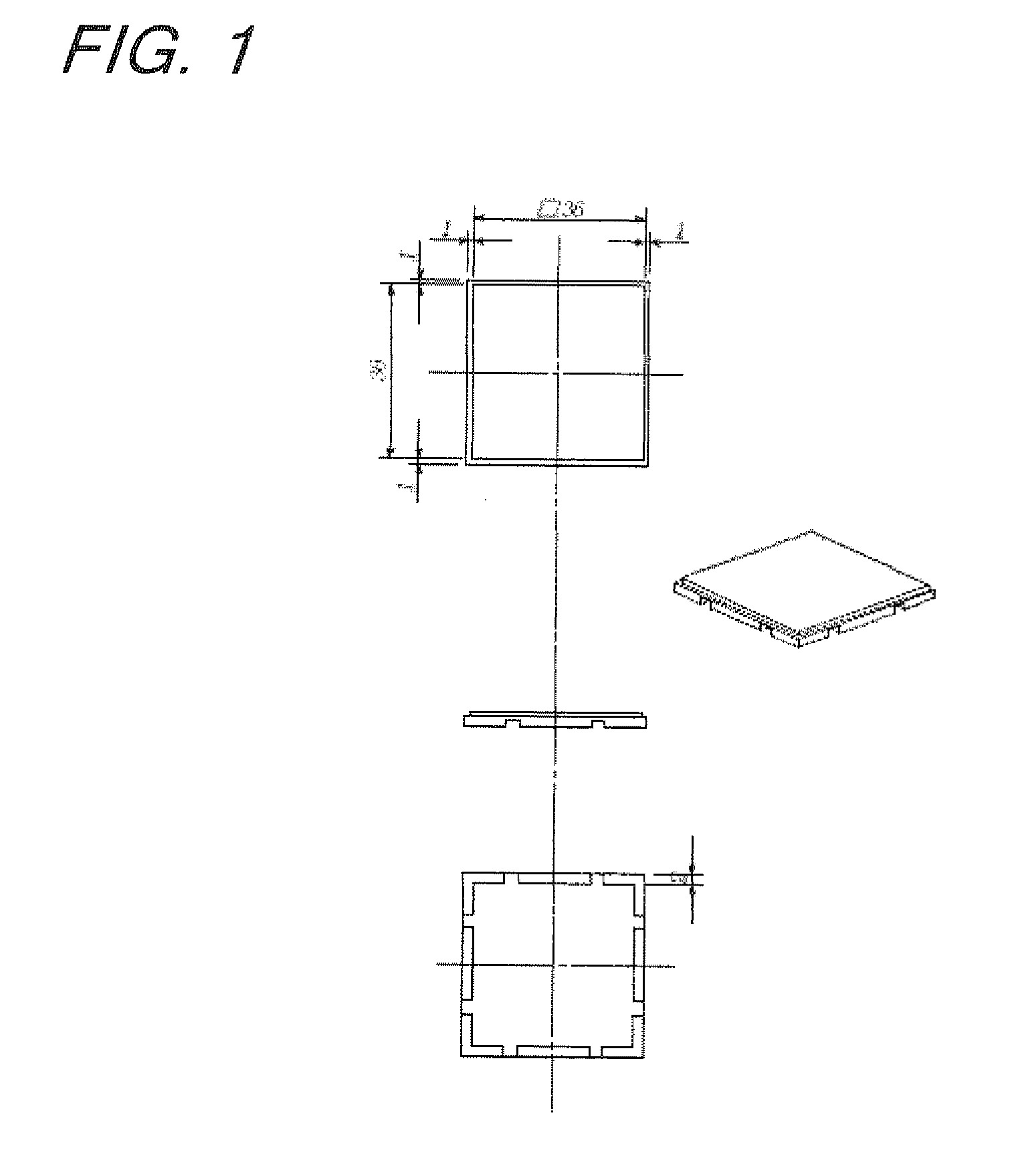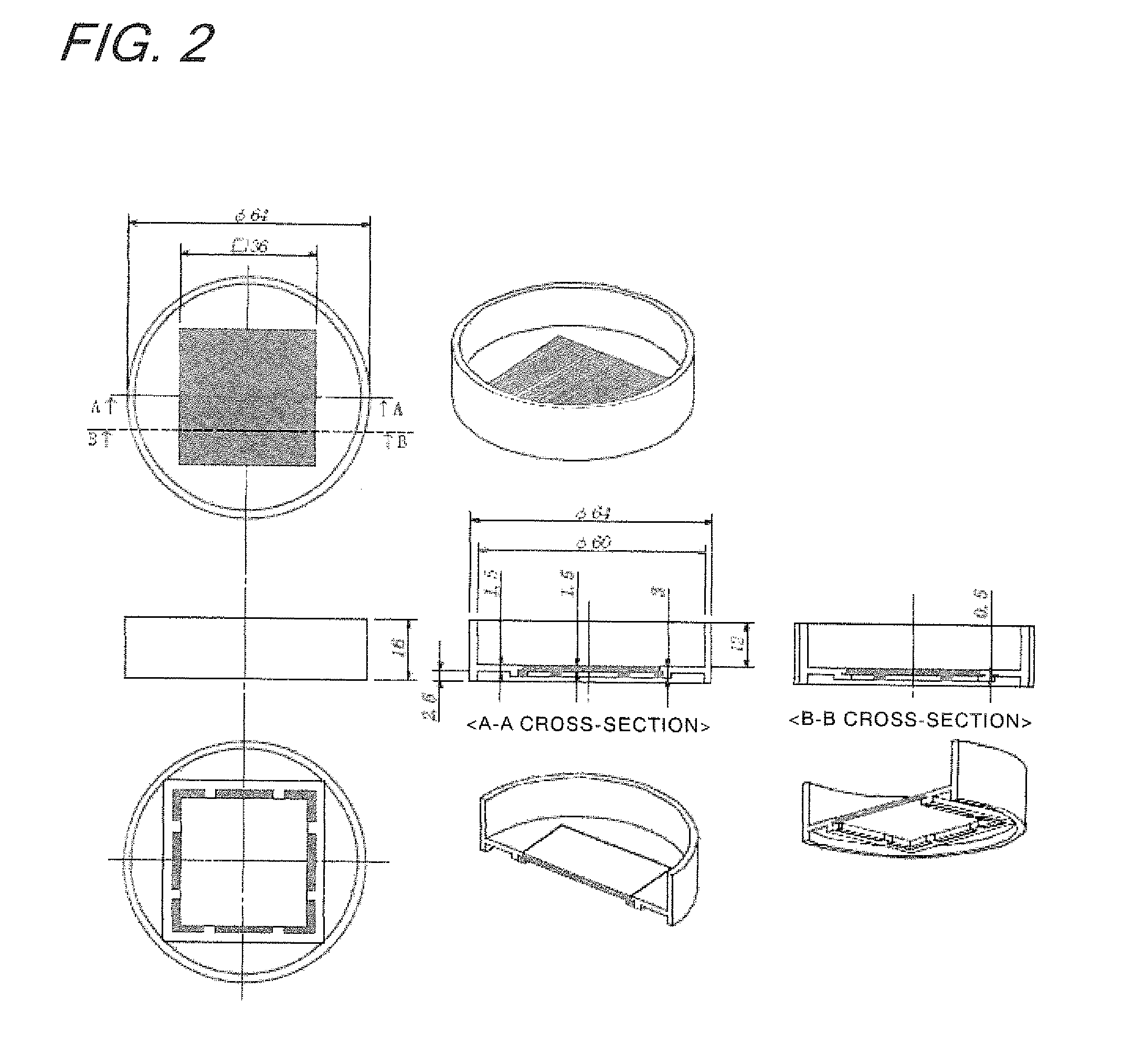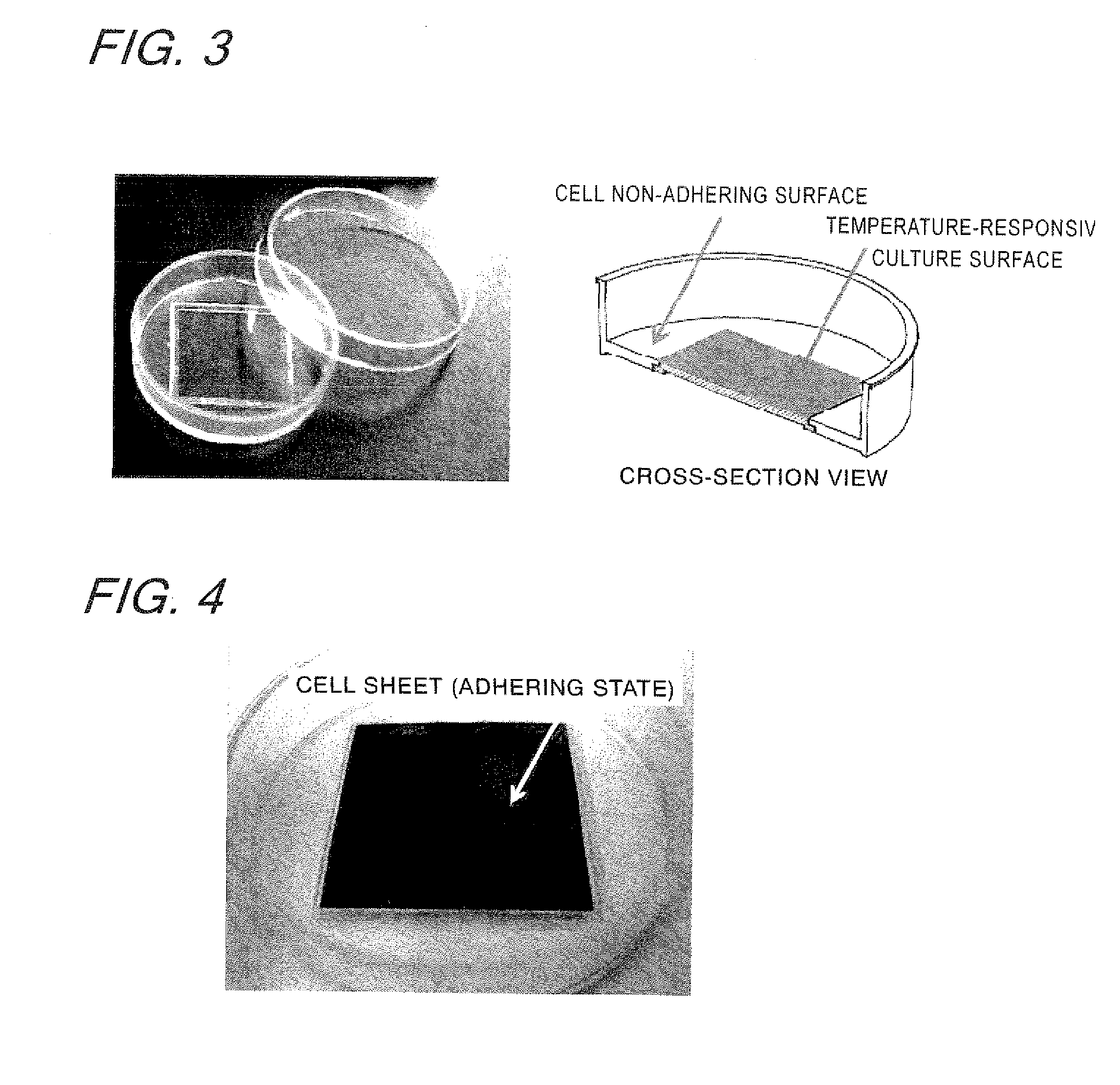Temperature-responsive cell culture substrate and method for producing the same
a cell culture substrate and temperature-responsive technology, applied in the field of cell culture substrates, can solve the problems of not being investigated, no actual countermeasure, and inability to efficiently arrange cells on affected areas,
- Summary
- Abstract
- Description
- Claims
- Application Information
AI Technical Summary
Benefits of technology
Problems solved by technology
Method used
Image
Examples
example 1
[0040]Poly-N-isopropylacrylamide was selected as a temperature-responsive polymer, and a polystyrene resin was selected as a material that was grafted by the polymer to form a surface that allows cells to adhere thereto and to grow thereon during cell culturing and that allows the adhering and grown cells to be detached therefrom by changing the culturing temperature. First, the polystyrene surface was molded. FIG. 1 shows a design of the molded product. The injection molding was carried out under the following conditions: a cylinder temperature of 200° C., an injection pressure of 400 kg / cm2, an injection rate of 10 / 100 mm / sec, a cooling time of 20 sec, and a die temperature of 50° C. The injection molding machine used was a model M-100 manufactured by Meiki Co., Ltd. Then, this flat polystyrene plate was placed in the model M-100 manufactured by Meiki Co., Ltd. and was injection-molded into a polymethylpentene to form a polymethylpentene dish having a quadrangular polystyrene surf...
example 2
[0044]Poly-N-isopropylacrylamide was selected as a temperature-responsive polymer, and a polystyrene resin was selected as a material that was grafted by the polymer to form a surface that allows cells to adhere thereto and to grow thereon during cell culturing and that allows the adhering and grown cells to be detached therefrom by changing the culturing temperature, as in Example 1. The polystyrene surface was molded into a shape shown in FIG. 6. First, a quadrangular polystyrene plate was produced under the following injection conditions: a cylinder temperature of 200° C., an injection pressure of 400 kg / cm2, an injection rate of 10 / 100 mm / sec, a cooling time of 20 sec, and a die temperature of 50° C. (one black portion at the center of FIG. 6), as in Example 1. The injection molding machine used was a model M-100 manufactured by Meiki Co., Ltd., as in Example 1. Then, this flat polystyrene plate was placed in the model M-100 manufactured by Meiki Co., Ltd. and was injection-mold...
example 3
[0045]Investigation was performed as in Example 2 except that exposure portions of the polystyrene surface were four circular portions as shown in the center of FIG. 7. Human skeletal muscle myoblasts were cultured by the procedure as in Example 1 for four days and were cooled as in Example 1 to detach cell sheets from the four circular portions shown in FIG. 7. This confirmed that the temperature-responsive cell culture substrate of the present invention can be obtained and that cultured cell sheets having desired shapes and sizes can be obtained by culturing cells using this substrate.
PUM
| Property | Measurement | Unit |
|---|---|---|
| temperature-responsive | aaaaa | aaaaa |
| temperature | aaaaa | aaaaa |
| temperature | aaaaa | aaaaa |
Abstract
Description
Claims
Application Information
 Login to View More
Login to View More - R&D
- Intellectual Property
- Life Sciences
- Materials
- Tech Scout
- Unparalleled Data Quality
- Higher Quality Content
- 60% Fewer Hallucinations
Browse by: Latest US Patents, China's latest patents, Technical Efficacy Thesaurus, Application Domain, Technology Topic, Popular Technical Reports.
© 2025 PatSnap. All rights reserved.Legal|Privacy policy|Modern Slavery Act Transparency Statement|Sitemap|About US| Contact US: help@patsnap.com



